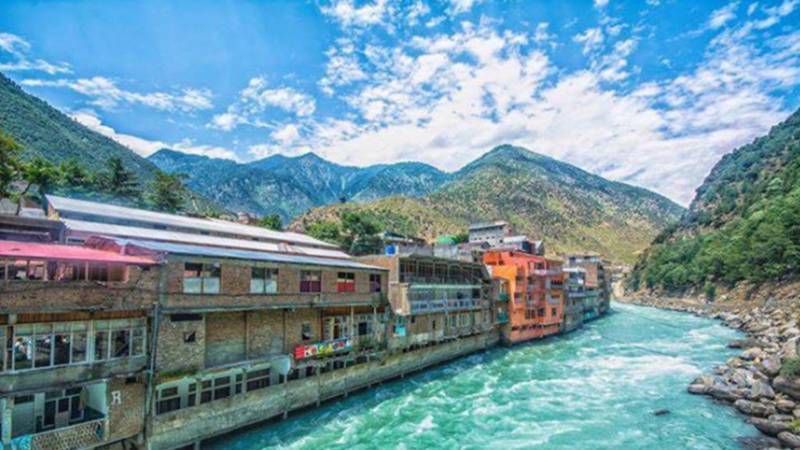
Pakistan boasts a rich and diverse topography. From being home to five of the world's 14 mountains taller than eight-thousander metres, all the way to pristine, sandy beaches and plains rich with millennia-old history, make it an ideal destination for mountaineers, adventure seekers and travellers of nearly every kind. The country's northern region is renowned for its lush green meadows and abundant rainfall. The extensive southern plains of Pakistan are not only significant historically but are often referred to as the cradle of civilisation, with Mohenjo-daro standing as a testament to its rich heritage. Cities like Lahore, with a history spanning over 2,000 years, offer a blend of contemporary and historical experiences. Additionally, Pakistan is home to significant religious sites for all major regional religions.
Despite this immense potential, Pakistan's tourism industry remains underutilised, with historical and cultural assets rapidly disappearing. The World Economic Forum (WEF) has ranked Pakistan 101st out of 119 countries in its Travel and Tourism Development Index (TTDI) for 2024. Currently, the country earns approximately $1.3 billion in foreign exchange revenue from tourism. When you compare this with a place like India, which earns more than $190 billion per year from tourism as per data from 2022, it indicates that there exists significant room for growth and improvement. Sure, the comparison is skewed due to India's larger size, population, and various socio-political factors, but it does not overshadow Pakistan's potential when it comes to tourism.
There are several fundamental failures which hinder the country's journey to a tourism boom, such as the lack of resources and the need for enhanced security and safety for tourists. A crucial factor Pakistan must overcome is understanding tourists' psychology and needs. Tourists seek more than just lush green mountains or historical buildings and architecture. They desire a complete experience where they feel safe, relaxed and fully enjoy themselves without being judged at every corner. Otherwise, only a few mountaineers and archaeologists might visit for professional reasons. Here, the common trait obviously is that most of these visitors spend most of their visit in remote areas isolated from the average Pakistani or the drama dominating the daily news cycle.
Even though successive governments have promised to focus on and uplift Pakistan's tourism industry, the sector remains largely unregulated, leaving tourists at the mercy of local vendors and hotel operators. The 2022 Murree incident speaks volumes in this regard, where innocent lives were lost due to the greed and mismanagement of local authorities and hotel operators. Our tourist sites are not well-maintained, lack basic amenities, and are irresponsibly littered, further tarnishing the country's appeal to tourists. Haphazard and excessive commercialisation of popular sites like Murree, Swat, Babusar Top and Gilgit-Baltistan have disrupted their natural beauty and ecosystems.
It is worth mentioning how the UAE has strategically positioned itself as a major global tourism destination through its comprehensive UAE Tourism Strategy 2031
Furthermore, there is a dearth of recreational activities at our tourist destinations - whether to cater for domestic or foreign tourists. Our underdeveloped coastal areas, except Karachi, lack world-class sporting activities, travel facilities, luxury hotels and resorts. We do not have any quality ice-sports facilities in northern Pakistan. Even those who do arrange entertainment opportunities are often disturbed by local authorities. Our historical sites, which we claim are a major attraction for foreign tourists - especially those belonging to minorities or those located outside the main city centres - are deeply neglected, presenting a rundown outlook and diminishing their tourism value.
On the marketing front, Pakistan has taken no concrete steps, with any efforts often limited to mere lip service. Regular cultural shows featuring dancing, local sporting events, and singing should be held. Pakistan needs to adopt out-of-the-box marketing strategies and reduce its reliance on traditional media to promote tourism. Organising tourism festivals similar to Dubai's annual events, such as the Dubai Shopping Festival (DSF), could have a positive impact.
To promote tourism and increase its contribution to the GDP, there is a dire need for policy intervention focusing on restructuring the Pakistan Tourism Development Corporation (PTDC) to involve the private sector. This should include devising a comprehensive execution mechanism with a public-private partnership, emphasising entertainment aspects and granting tourism sites special status to ensure tourists can fully enjoy their visits. It is worth mentioning how the UAE has strategically positioned itself as a major global tourism destination through its comprehensive UAE Tourism Strategy 2031. This plan aims to double the tourism sector's contribution to the GDP, targeting up to $121.5 billion. The strategy is founded on four key principles:
- To strengthen and promote the unified national tourism identity of the UAE to attract international tourists.
- To develop a wide and diversified range of tourism experiences, from luxury and shopping to cultural and adventure tourism.
- To enhance the skills and expertise within the tourism sector.
- To encourage local involvement and investment in tourism.
Pakistan can learn from UAE's tourism strategy and adapt it to our resources and needs. To address infrastructure deficiencies, private investors should be encouraged with lucrative returns to introduce world-class facilities across the country. Instead of focusing solely on the north, efforts should be made to promote unexplored sites in Balochistan and Sindh, which have an extensive list of potential tourist destinations.
Execution is the main hurdle in Pakistan, as policies are often made but not implemented in their true spirit. Therefore, inviting private investment, including foreign investment, along with establishing effective regulatory bodies at the federal and provincial levels—similar to the Singapore Tourism Board (STB), whose effectiveness lies in collaboration with the private sector—will strengthen the tourism sector and contribute to nation-building.

